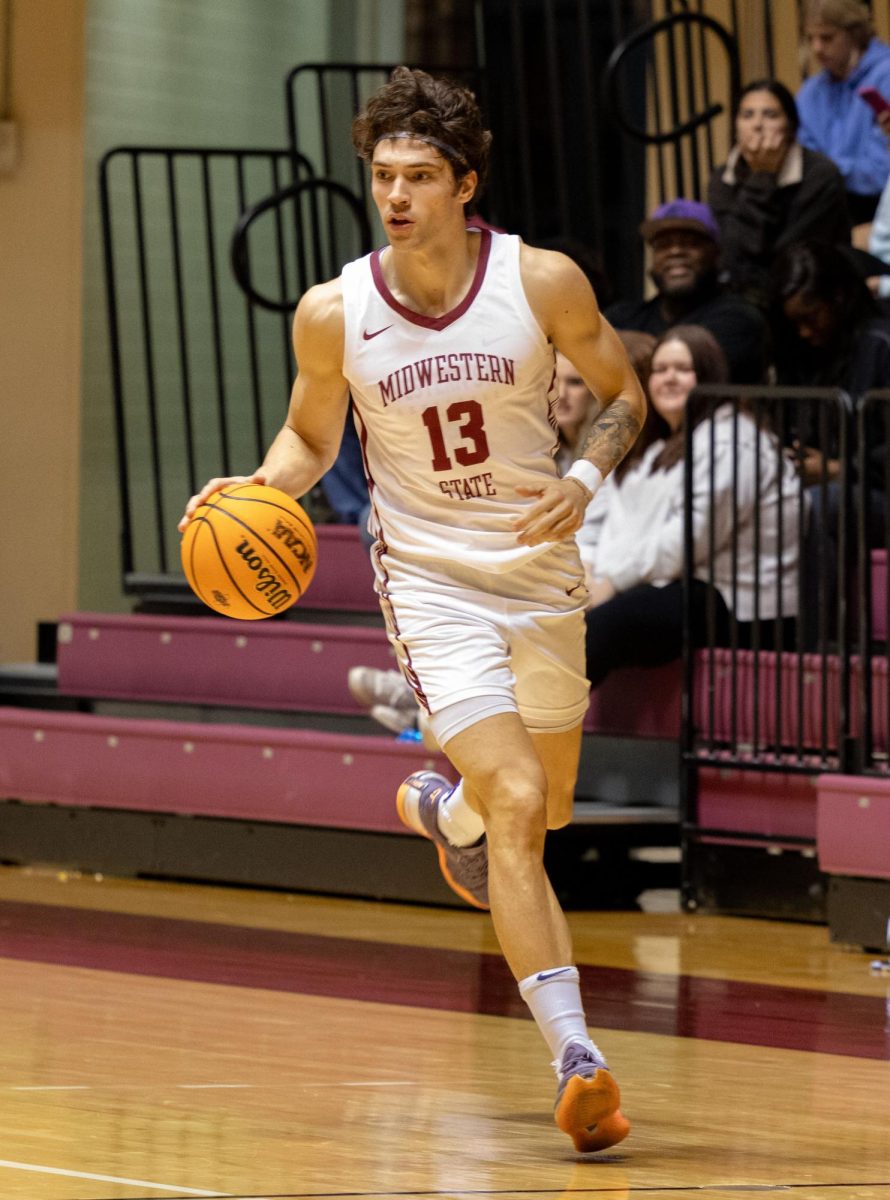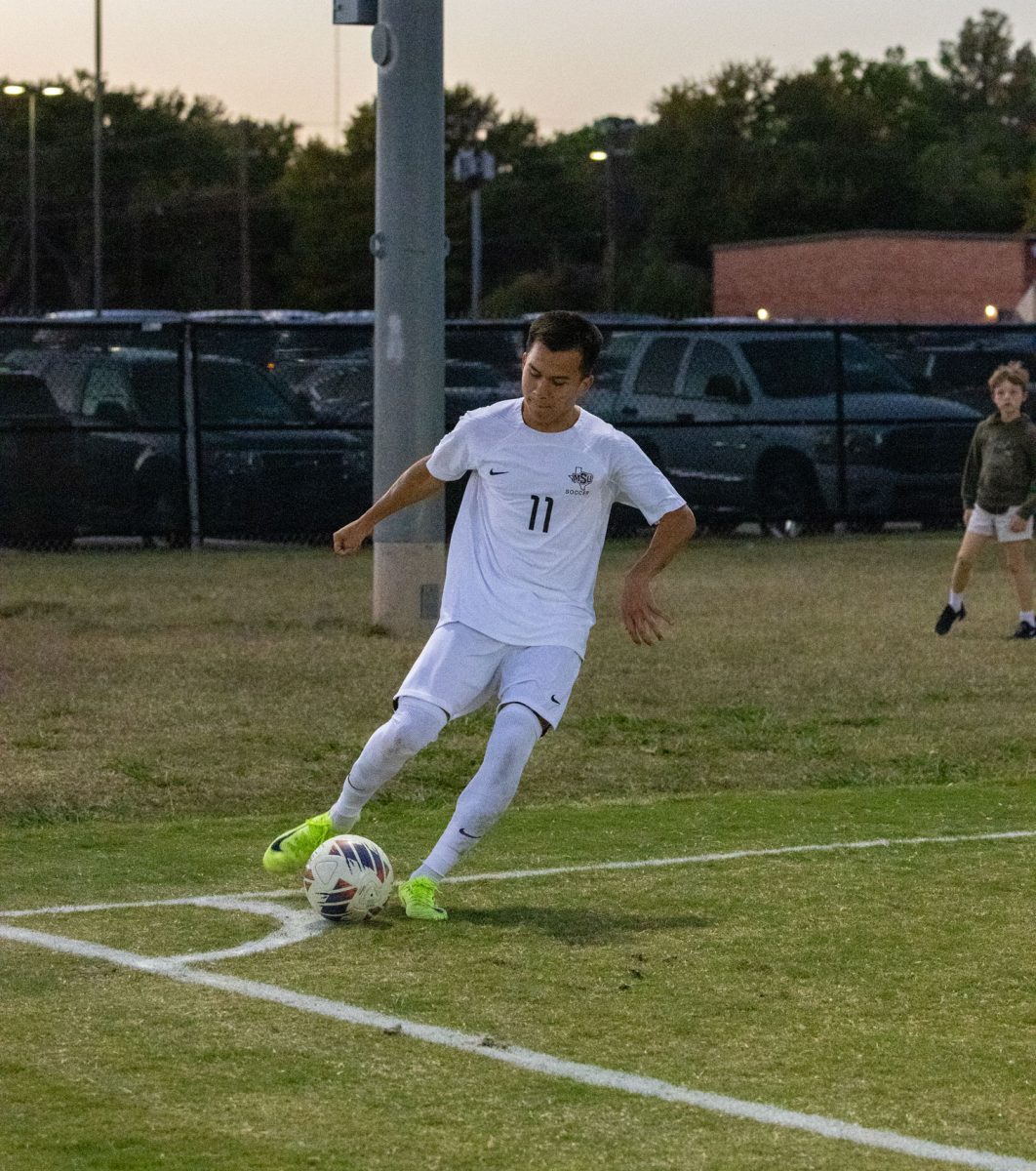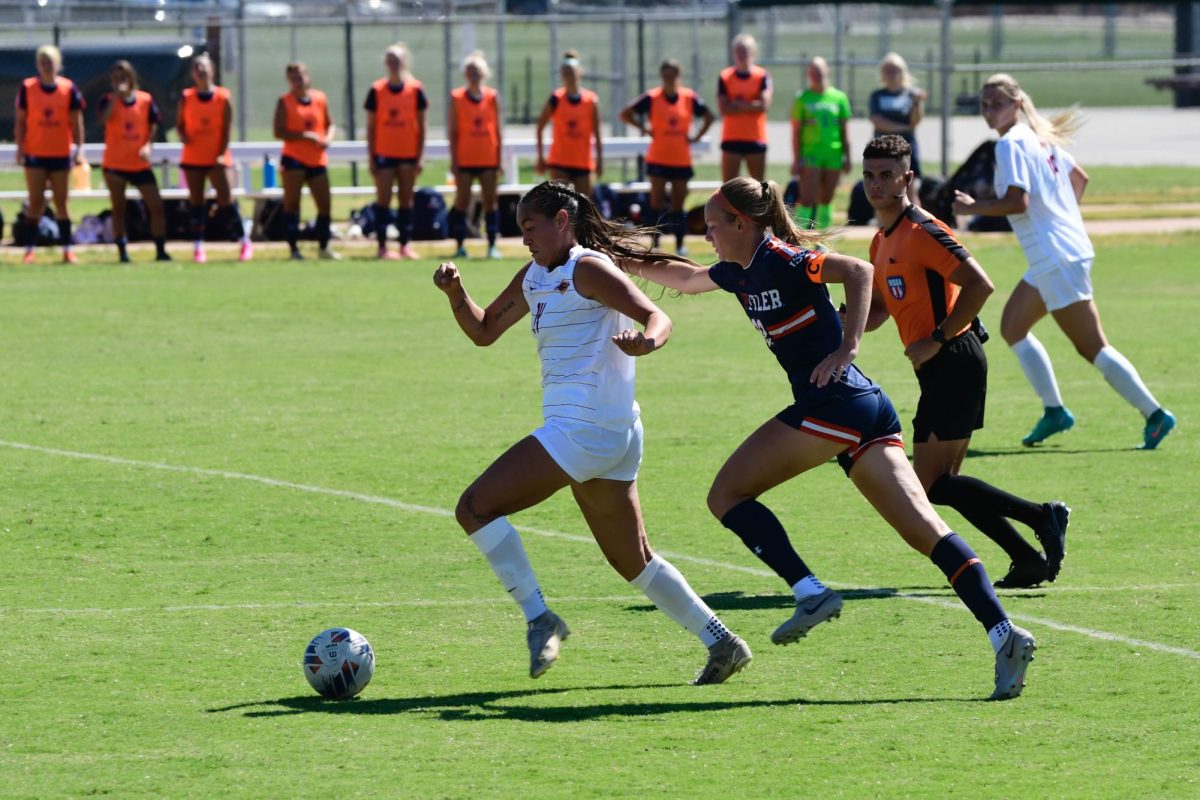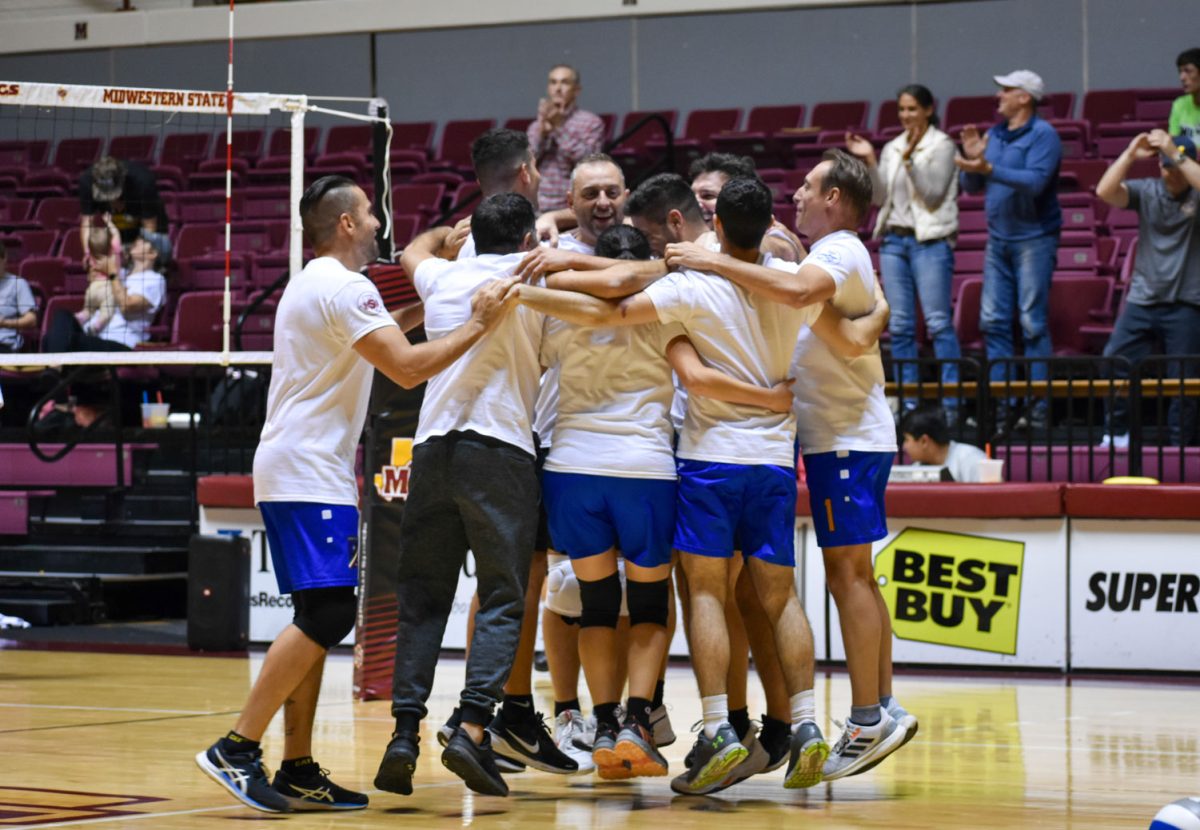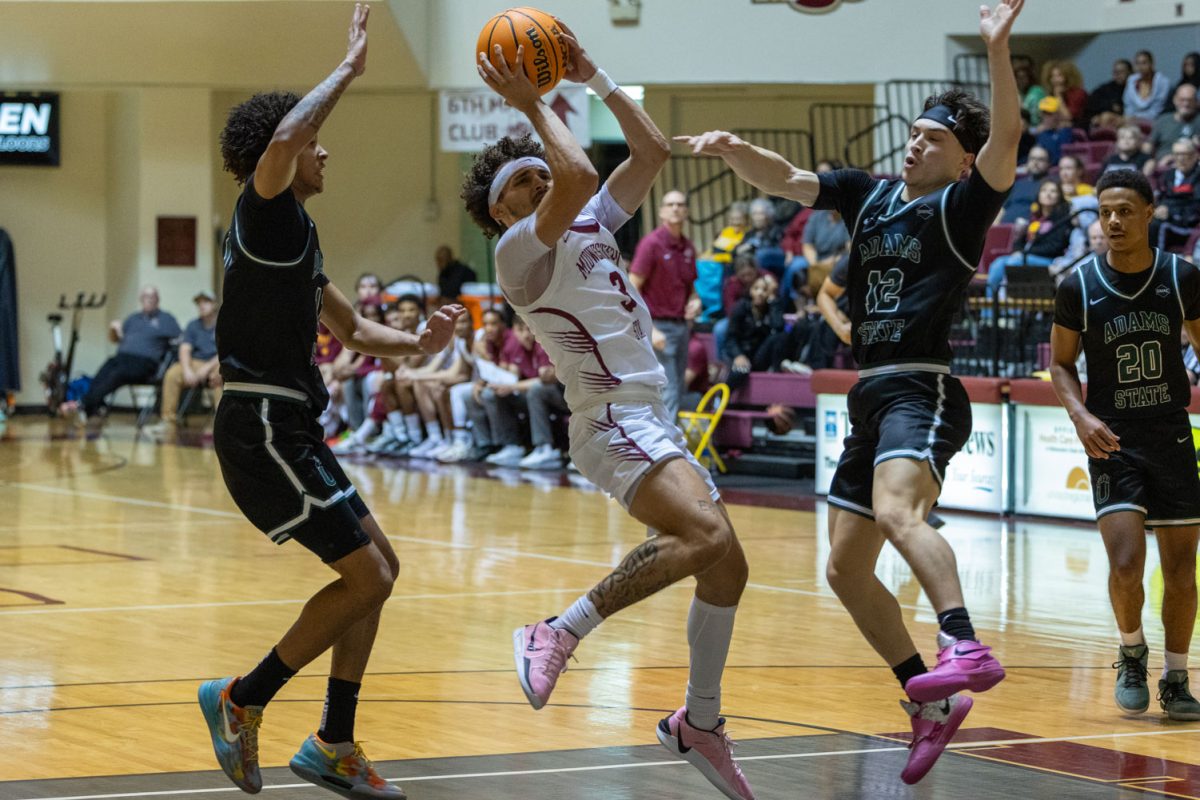Team hopes to continue fall success in spring with race in Austin
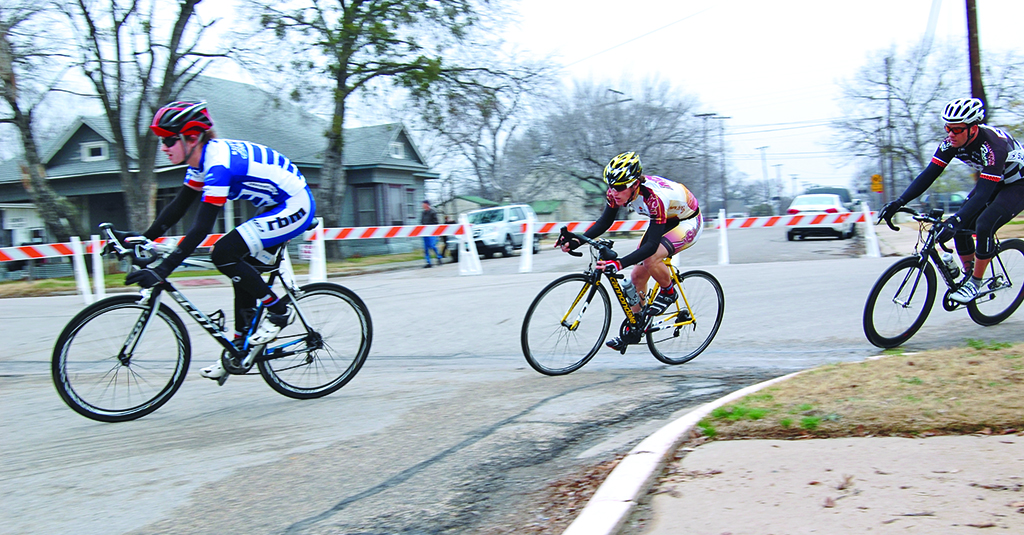
Photo by Caden Burross
The cycling team will start its spring season at the University of Texas at Austin’s Road Race Weekend on Saturday and Sunday.
“Road racing is what’s going on right now, and that’s our primary focus,” head coach Charlie Zamastil said. “That’s what you think of when it comes to Hotter ‘N Hell Hundred or the Tour de France.”
While road racing will now be the team’s major focus, there are other events the team participates in year-round.
Zamastil said the cyclists also participate in track cycling, which is done on the velodrome and featured heavily in the 2012 London Olympics, BMX biking, mountain biking, short track, cross country biking, gravity events and cyclo-cross.
The cycling team, formerly known as Team Arrow, has been a campus club team since 1989, when Robert Clark, vice president of administration and institutional effectiveness, helped establish the team. The major difference of Team Arrow is their governing body, USA Cycling, and that the NCAA has nothing to do with them.
“The NCAA does not govern us,” Zamastil said. “Cycling at the collegiate level is governed by USA Cycling, which governs all professional teams to club teams. Any race out there, whether it’s high school, amateur, professional or masters, it’s all USA Cycling. Even if it’s a varsity sport, which is what we’re considered, it has nothing to do with the NCAA.”
Even though cycling is not an NCAA-governed sport, the team still receives some budgeting from administration, but a bulk of its funding is done through fundraising and sponsorships according to Zamastil.
“Cycling is a surprisingly expensive sport,” Zamastil said. “Every bike the riders are on were all purchased by them up until this year, when we got a sponsorship deal with Giant Bicycle company. They still own all their own bikes, and they cost probably anywhere from $1,000 to $6,000. They travel every weekend, and they stay in a hotel or host housing when we go to races. Clothing and gear also costs a lot when it all adds up, too.”
Most of the riders on the team not only race for MSU, but also for other club teams.
“A couple of our guys ride for a team out of Oklahoma called DNA,” Zamastil said. “ Jessica Prinner rides for Ride Clean, and Sam Croft rides for the Giant Factory South Team, which is actually my club team that I ride for when I’m not coaching.”
Zamastil said collegiate races are only open to schools in comparison to club races. While club team races have gotten in the way of the cycling team’s races, collegiate racing does take priority when it comes to national qualifiers.
“Our number one goal is to make sure the whole team qualifies for the national championships,” Zamastil said. “Only the top teams in the conference get to do that, so we have to make sure we go to enough conference races to score enough points to get there.”
Zamastil said the team’s race schedule and strength prepares them to dominate these races. For this season, he took his A team to bigger USAC races to give them a better competitive field.
“I’m not going to take them to a race that’s not so hard,” Zamastil said. “I want to take them to races where they’re going to be going up against people that are actually stronger than they are, or at least at the same level. Where as in conference, maybe there are three guys total that are even on the same level as our six guys.”
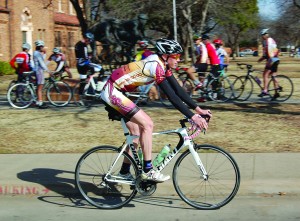
Photo by Caden Burross
Aside from racing, the team also has team practices on rides on the weekends.
Zamastil said he writes out a personalized training program for any of the riders based on their level of fitness, ability and how many years they have been doing this. The team also has team meetings where they talk about strategy.
“We also drive up to the Wichita Mountains every Wednesday,” Zamastil said. “The riders are on their own with a workout I’ve written for them to get some climbing in. The national championship is in Ogden, Utah, so there’s altitude and a 2000-foot climb there. Even though Mt. Scott is only 1,000 feet, it’s the best we got.”
The team is looking to continue their success from last season, when the team placed second at the track nationals in September, as well as having several members medal individually.
“We have a strong team this year,” Claire Routledge, a senior in geology, said. “We have added some new riders to our roster who I think will only add to our strengths in the various disciplines. I hope to put in a strong performance at my last Collegiate Nationals race for MSU in both the Team Time Trial and the Criterium events.”
The team also won both men’s A and B groups at the mountain bike conference championship in November, and Zamastil said he remembers a moment from that race showing the team’s talent.
“The A group is the fastest. B is the second fastest. C is the third fastest. And D is the fourth,” Zamastil said. “One of our B riders, David Barrett, actually wanted to ride with the As, but he hasn’t actually upgraded yet. They start the field with the A guys first, and the B guys start about five minutes later and so on with the other groups. On a single-speed bike, David passed every single person in the A field except for his teammate, Tony Baca, in that win. We hope to send those two to nationals this year.”

Photo by Caden Burross
For this season, Zamastil said he fully expects to have somebody finish on the podium in the men’s and women’s individual championships, as well as winning the team trials.
“Call it overly optimistic, because sometimes cycling is a crap shoot and you’re going up against 160 other people that want the same thing, but we have such a strong team and they’re so committed to working together towards a common goal,” Zamastil said.
While cycling is a team sport, Zamstil said that it still only has one technical winner that stands on the podium. This means that for that person to get there, a supportive team is necessary to accomplish that feat, something Zamastil believes he has with his team.
“This team is made up of roommates and best friends,” Zamastil said. “They hang out all the time outside the concept of cycling, and as far as I know, there’s no internal drama. They generally and truly like each other. I have confidence that come nationals, we’re going to have a better team, and it’s the better team that puts the individual on the podium.”
Despite their strengths, the team does have a few areas to improve on. Zamastil said staying off the ground, or avoiding crashes, is a main concern for the team.
“Some of the bike handling is suspect at times,” Zamastil said. “It’s not if you crash, but when. Usually you can avoid it, but this team has had a history of crashing each other out because of bike handling or hitting the deck. Knowing when a crash might happen and being in position to avoid it is a learned skill. They’re so strong, but a lot of them lack experience, so getting to that point where they can anticipate it is a process.”
Zamastil said the team is always looking for new riders to prepare for the future.
“We find ways to get anyone on a bike that wants to,” he said. “If you want to join, all you have to do is shoot me an email and you’re on the team.”
In the past, Zamastil’s riders have approached him personally, on the team’s website or on Facebook. The team members have a hand in recruiting and find people of all ages on campus.
“I actually got involved with the team after talking to a friend of mine who is a cyclist during homecoming of 2011,” 39-year-old senior engineering major Austin Smith said. “His uncle was a part of the team and he mentioned there was no age limit. I figured it would be a good way to elevate my abilities on the bike so I joined the team.”
Zamastil said the team meets every Monday at 3 p.m. at the cycling statue behind the Hardin building for a weekly meet-and-greet ride for coffee or frozen yogurt to recruit new riders.
“If you own a Wal-Mart bike, you can come,” he said. “We’ll go as slow as we need to. You have to remember that we’re in this because we enjoy bikes more than anything. Ninety percent of the people on the team have no aspirations of going pro or having a career in biking.”



